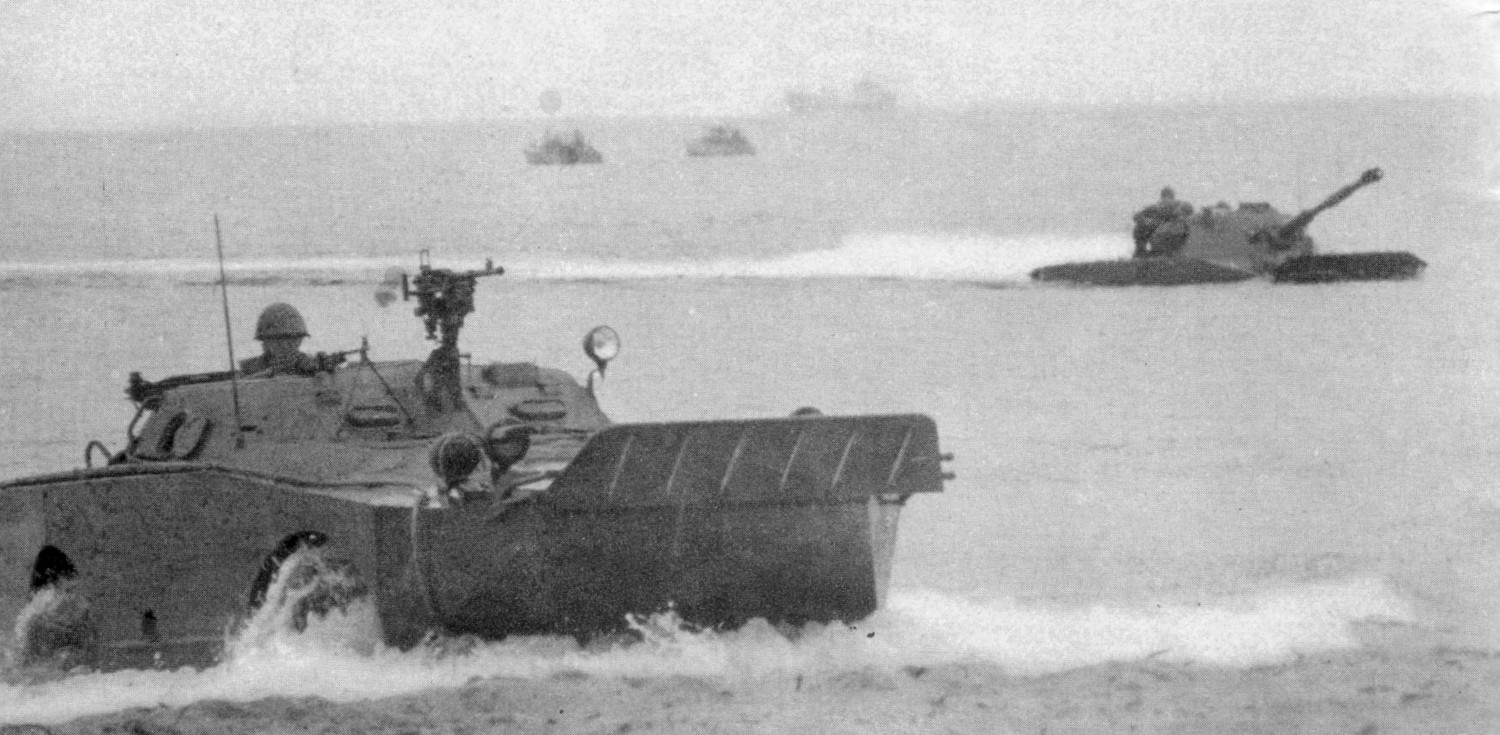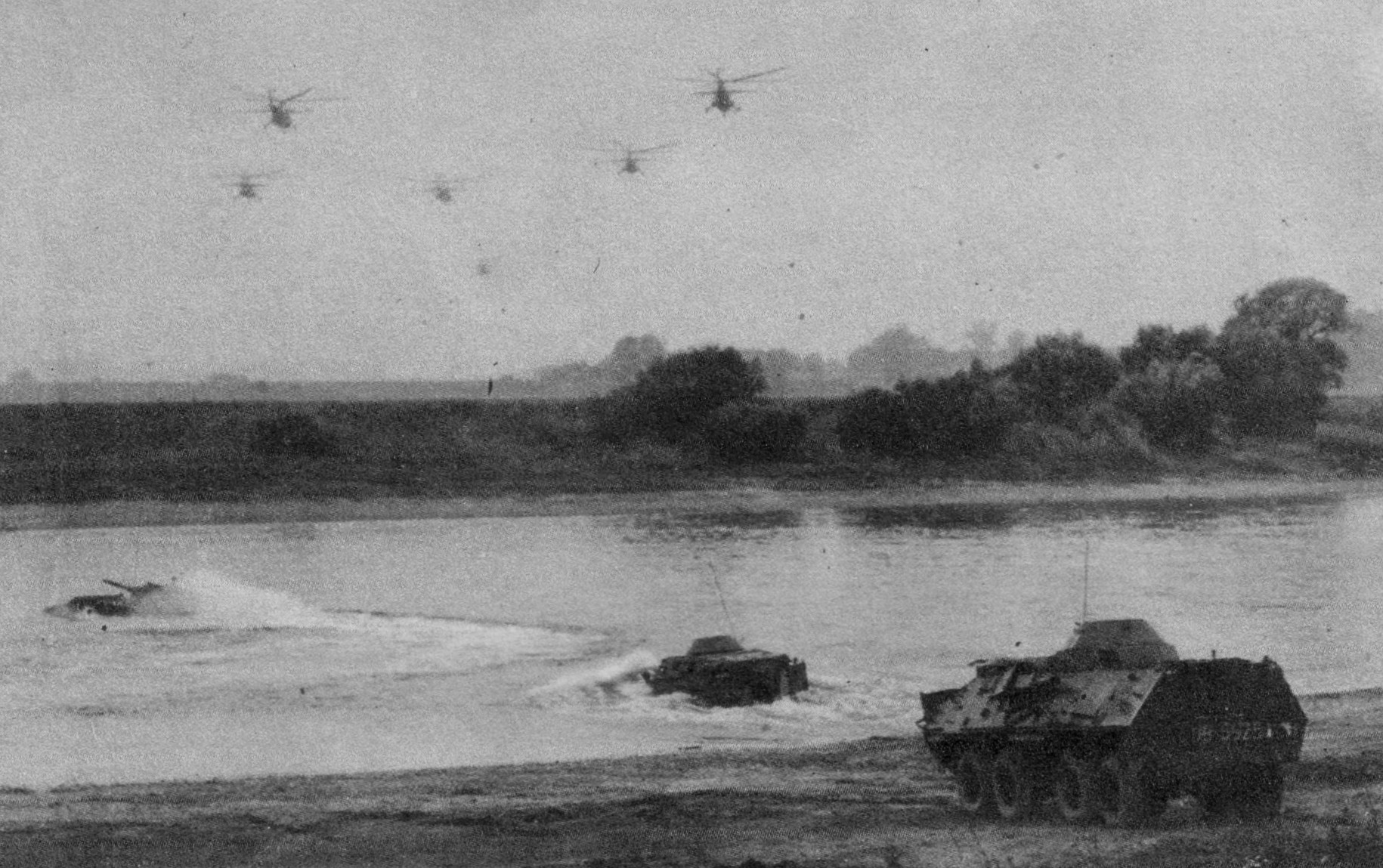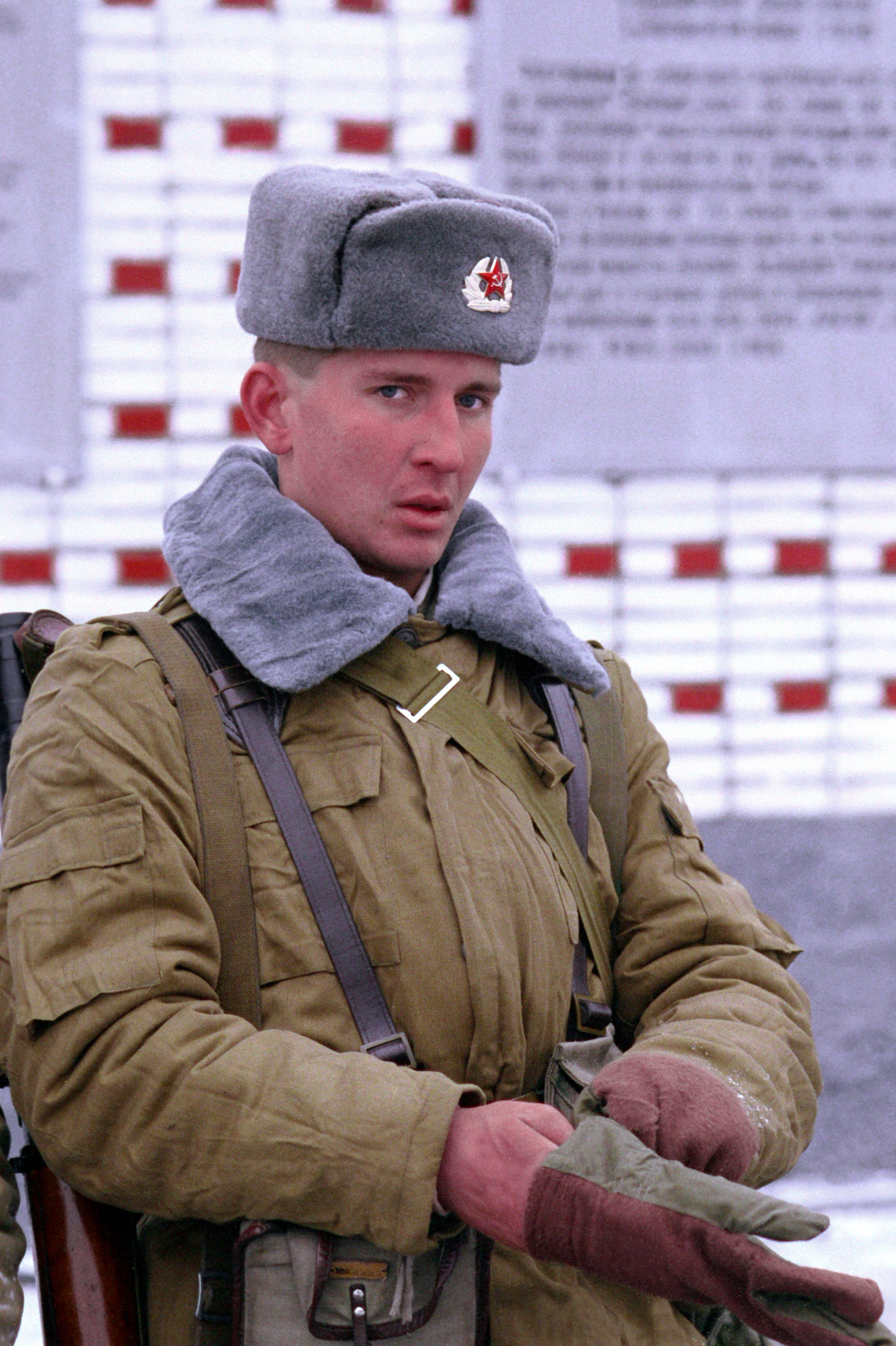|
BRDM-2
The BRDM-2 (''Boyevaya Razvedyvatelnaya Dozornaya Mashina'', Боевая Разведывательная Дозорная Машина, literally "Combat Reconnaissance/Patrol Vehicle") is an amphibious armoured scout car designed and developed in the Soviet Union. It was also known under the designations BTR-40PB, BTR-40P-2 and GAZ 41-08. This vehicle, like many other Soviet designs, has been exported extensively and is in use in at least 38 countries. It was intended to replace the older BRDM-1, and has improved Amphibious vehicle#Armoured, amphibious capabilities and better armament compared to its predecessor. History After a few years of use by the Soviet Army, the limitations and drawbacks of the BRDM-1 became obvious. The vehicle had no turret and to operate the armament the gunner had to open a hatch and expose himself to enemy fire. The vehicle was not fitted with an NBC protection system, and had no night vision equipment by default. The vehicle also lacked any kind o ... [...More Info...] [...Related Items...] OR: [Wikipedia] [Google] [Baidu] |
BRDM 2 TBiU 24
BRDM is an initialism for ''Boyevaya Razvedyvatelnaya Dozornaya Mashina'', (RU Боевая Разведывательная Дозорная Машина), literally "Combat Reconnaissance Patrol Vehicle". The BRDM is a eight-wheeled amphibious vehicle which is very lightly armoured by today's standards. Both versions were produced in the Soviet Union and other Eastern Bloc countries. Both versions came in an ATGM variant. The BRDM-2 also came as a command vehicle and as an air defence vehicle. BRDM-1 The BRDM-1 (also known as the BTR-40P) first appeared in 1959, and was in production until 1966. Total production was around 10,000 vehicles; less than 600 remain in the reserves of a number of countries. It was armed with a pintle-mounted heavy machine gun. The initial version of the vehicle, the Model 1957, had an open roof, but the standard production model, the Model 1958, had a roof with twin hatches. The vehicle was used as the basis of the 2P27 anti-tank missile launcher, ... [...More Info...] [...Related Items...] OR: [Wikipedia] [Google] [Baidu] |
BRDM-1
The BRDM-1 (''Bronirovannaya Razvedyvatelnaya Dozornaya Mashina'', Бронированная Разведывательная Дозорная Машина, literally "armored reconnaissance/patrol vehicle") is a Soviet amphibious armored scout car. It was the first purpose-built Soviet reconnaissance vehicle to enter service since the BA-64 and was built on the chassis and drive train of the BTR-40 armored personnel carrier. It is the world's first mass-produced combat vehicle of its class. The primary advantage of the BRDM-1 at the time of its introduction was its amphibious capability, which was the main shortcoming associated with its BTR-40 counterpart. Another unique feature of the vehicle's design were two pairs of chain-driven auxiliary wheels, which could be lowered to provide additional traction on muddy terrain. The BRDM-1 was manufactured from 1957 to 1966, at which time 10,000 had entered service with the Soviet Union and its military allies around the world. It was ... [...More Info...] [...Related Items...] OR: [Wikipedia] [Google] [Baidu] |
BRDM 2 TBiU 24 3
BRDM is an initialism for ''Boyevaya Razvedyvatelnaya Dozornaya Mashina'', (RU Боевая Разведывательная Дозорная Машина), literally "Combat Reconnaissance Patrol Vehicle". The BRDM is a eight-wheeled amphibious vehicle which is very lightly armoured by today's standards. Both versions were produced in the Soviet Union and other Eastern Bloc countries. Both versions came in an ATGM variant. The BRDM-2 also came as a command vehicle and as an air defence vehicle. BRDM-1 The BRDM-1 (also known as the BTR-40P) first appeared in 1959, and was in production until 1966. Total production was around 10,000 vehicles; less than 600 remain in the reserves of a number of countries. It was armed with a pintle-mounted heavy machine gun. The initial version of the vehicle, the Model 1957, had an open roof, but the standard production model, the Model 1958, had a roof with twin hatches. The vehicle was used as the basis of the 2P27 anti-tank missile launcher ... [...More Info...] [...Related Items...] OR: [Wikipedia] [Google] [Baidu] |
OT-64
The OT-64 SKOT (Czech acronym for: ''Střední Kolový Obrněný Transportér'', and/or Polish ''Średni Kołowy Opancerzony Transporter'' – medium wheeled armoured transporter) is an amphibious armored personnel carrier ( 8x8), developed jointly by Polish People's Republic ( PRL) and Czechoslovakia ( ČSSR) well into the 1960s. Until the early 1970s Czechoslovakia and the Polish People's Republic produced around 4,500 OT-64 SKOTs of all variants, just under a third of which were exported.BURIAN, Michal; DÍTĚ, Josef; DUBÁNEK, Martin. OT-64 SKOT: historie a vývoj obrněného transportéru. 1. vyd. Praha: Grada, 2010.Kajetanowicz Jerzy, Transporter opancerzony SKOT i jego odmiany produkowane w Polsce, Zeszyty Naukowe WSOWL 2016, nr 2Kubiaczyk C., Transporter opancerzony SKOT, A. Karaś, W. Stefanowska (red.), J. Magnuski, Seria: Typy broni i uzbrojenia, vol. 9, Warszawa: Wydawnictwo Ministerstwa Obrony Narodowej, 1971 In 2002, the modernization of the SKOT transporter began ... [...More Info...] [...Related Items...] OR: [Wikipedia] [Google] [Baidu] |
OT-64 SKOT
The OT-64 SKOT (Czech language, Czech acronym for: ''Střední Kolový Obrněný Transportér'', and/or Polish language, Polish ''Średni Kołowy Opancerzony Transporter'' – medium wheeled armoured transporter) is an Amphibious vehicle, amphibious armored personnel carrier (Eight-wheel drive, 8x8), developed jointly by Polish People's Republic (Polish People's Republic, PRL) and Czechoslovakia (Czechoslovak Socialist Republic, ČSSR) well into the 1960s. Until the early 1970s Czechoslovakia and the Polish People's Republic produced around 4,500 OT-64 SKOTs of all variants, just under a third of which were exported.BURIAN, Michal; DÍTĚ, Josef; DUBÁNEK, Martin. OT-64 SKOT: historie a vývoj obrněného transportéru. 1. vyd. Praha: Grada, 2010.Kajetanowicz Jerzy, Transporter opancerzony SKOT i jego odmiany produkowane w Polsce, Zeszyty Naukowe WSOWL 2016, nr 2Kubiaczyk C., Transporter opancerzony SKOT, A. Karaś, W. Stefanowska (red.), J. Magnuski, Seria: Typy broni i uzbrojen ... [...More Info...] [...Related Items...] OR: [Wikipedia] [Google] [Baidu] |
BTR-60PB
The BTR-60 is the first vehicle in a series of Soviet eight-wheeled armoured personnel carriers (APCs). It was developed in the late 1950s as a replacement for the BTR-152 and was seen in public for the first time in 1961. BTR stands for ''bronetransportyor'' (). History Origins The BTR-152 and BTR-40, the first two Soviet mass-produced APCs developed after the Second World War, gave the Soviet Army useful experience with wheeled armoured personnel carriers. However, even as they were designed, they were not suited for the needs of the Soviet Army as they lacked a roof (which was added in later versions designated BTR-152K and BTR-40B respectively). The low combat values of the BTR-152 and BTR-40 were exposed when the Egyptian Army used them during the Suez Crisis and also when the Soviet Army used them in the fighting on the streets of Budapest during the Hungarian Revolution of 1956. These were among the reasons why the new APC was developed.Czołgi Świata, Issue 41, pp 1, 2 ... [...More Info...] [...Related Items...] OR: [Wikipedia] [Google] [Baidu] |
Scout Car
A scout car is a light wheeled armored military vehicle, purpose-built and used for passive reconnaissance. Scout cars are either unarmed or lightly armed for self-defense, and do not carry large-caliber weapons systems. This differentiates them from other reconnaissance vehicles and wheeled armoured fighting vehicles that may fulfill a similar mission but also possess much heavier armament. Scout cars are designed for carrying out observation and remaining undetected, while avoiding contact with the enemy. Armies which adopted the concept were likelier to place an emphasis on reconnaissance by stealth, unlike others which preferred more heavily armoured reconnaissance vehicles, designed to fight to obtain information if necessary. History The term "scout car" first entered widespread use in the 1930s as an official United States Army designation for any wheeled armored vehicle developed specifically for reconnaissance. Following the US entry into World War II, US Army staff cla ... [...More Info...] [...Related Items...] OR: [Wikipedia] [Google] [Baidu] |
KPV Heavy Machine Gun
The KPV heavy machine gun (, an initialism for ) is a Soviet designed 14.5×114mm-caliber heavy machine gun, which first entered service as an infantry weapon in 1949. In the 1960s, the infantry version was taken out of production because it was too large and heavy. It was later redesigned for anti-aircraft use, as it showed excellent results as an AA gun against low flying aircraft, with a range of horizontally and vertically. It was used in the ZPU series of anti-aircraft guns. Its size and power also made it a useful light anti-armour weapon on the BTR series of vehicles and the BRDM-2 scout car. Mechanics The KPV was a heavy machine gun developed by S. V. Vladimirov. It was developed in 1944 and adopted in 1949. It combines the rate of fire of a heavy machine gun with the armor-piercing capabilities of antitank rifles and was designed to combat lightly armored targets, firepower and manpower of the enemy located behind light cover, as well as to be an anti-aircraft mach ... [...More Info...] [...Related Items...] OR: [Wikipedia] [Google] [Baidu] |
GAZ-13
The GAZ-13 Chaika (Seagull) was an automobile manufactured by the Gorkovsky Avtomobilny Zavod (GAZ, Gorky Automobile Plant) from 1959 to 1981 as a generation of its Chaika marque. It is famously noted for its styling which resembled 1950s Packard automobiles. History The GAZ-13 Chaika debuted in 1958. It was produced from 1959 to 1981, with 3,179 built in all. The GAZ-13 was powered by a 195-hp SAE gross 5.5 L V8 with a 4 barrel carburetor called the ZMZ-13 engine, and driven through a push-button automatic transmission of a similar design to the Chrysler PowerFlite unit. The engine was a relatively modern and reliable design for its time, and a modified version of it with a reduced compression ratio and smaller 2 barrel carburetor would be used on the GAZ-53 truck, alongside the BRDM-2 military vehicle. It was offered as a saloon (GAZ-13), limousine (GAZ-13A), and four-door cabriolet (GAZ-13B) with an electrohydraulic top. The cabriolet was made in 1961 and 1962 for official ... [...More Info...] [...Related Items...] OR: [Wikipedia] [Google] [Baidu] |
Soviet Army
The Soviet Ground Forces () was the land warfare service branch of the Soviet Armed Forces from 1946 to 1992. It was preceded by the Red Army. After the Soviet Union ceased to exist in December 1991, the Ground Forces remained under the command of the Commonwealth of Independent States until it was formally abolished on 14 February 1992. The Soviet Ground Forces were principally succeeded by the Russian Ground Forces in Russian territory. Outside of Russia, many units and formations were taken over by the post-Soviet states; some were withdrawn to Russia, and some dissolved amid conflict, notably in the Caucasus. While the Ground Forces are commonly referred to in English language sources as the Soviet Army, in Soviet military parlance the term '' armiya'' (army) referred to the combined land and air components of the Soviet Armed Forces, encompassing the Ground Forces as well as the Strategic Rocket Forces, the Air Defence Forces, and the Air Forces. After World W ... [...More Info...] [...Related Items...] OR: [Wikipedia] [Google] [Baidu] |




